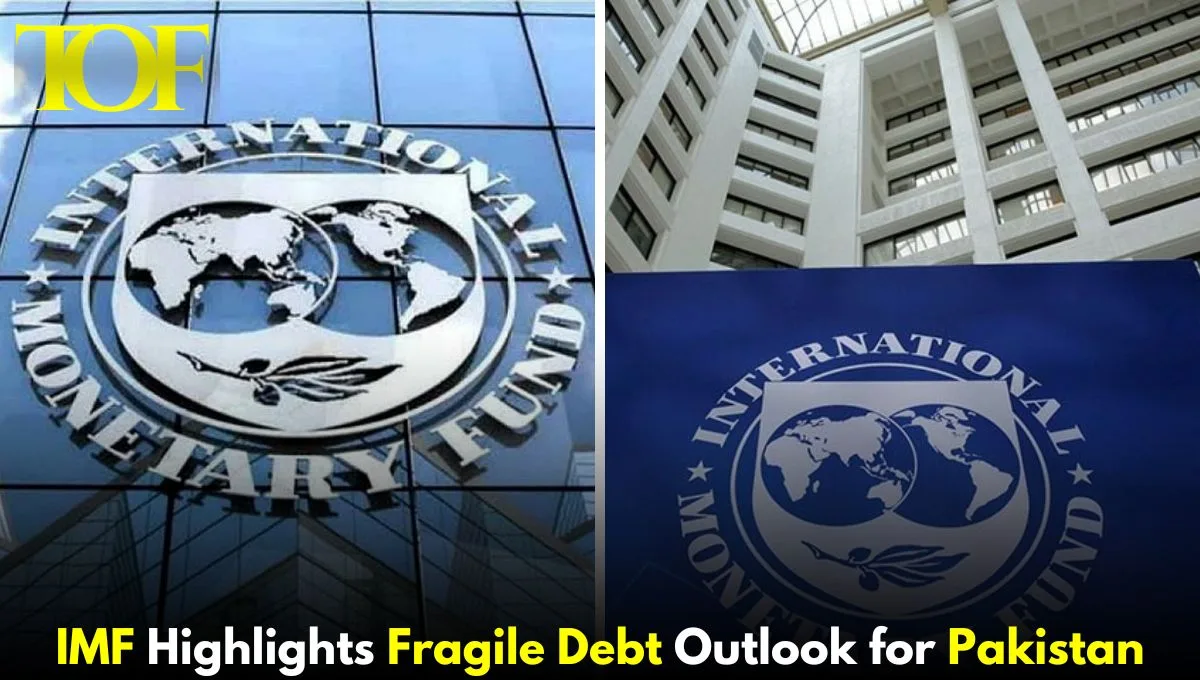International Monetary Fund (IMF)
IMF expressing concerns over Pakistan’s ability to manage its external debt, the International Monetary Fund has described the situation as fragile and increasingly reliant on procuring extricated funds. According to the recent report of the IMF on Pakistan under the Extended Fund Facility program, the country’s external financing requirement has ballooned to $62.6 billion over the three years from 2024-25 to 2026-27. The financing would jump sharply to $110.5 billion if the requirement is stretched over five years up to 2028-29.
According to the staff report of the IMF, the country’s external financing requirement for the fiscal year under consideration is projected at $18.813 billion. This, however, is likely to rise to $20.088 billion in the fiscal year 2025-26 and to $23.714 billion in 2026-27. Even after the intended completion of the three-year EFF program, the financing needs of Pakistan are expected to stay high in 2027-28 at $24.625 billion and then $23.235 billion during 2028-29.
The IMF puts the servicing capacity of Pakistan on an open exposure to very grave risks. This risk profile is considered to be mainly driven by high public debt, gross financing needs, low foreign reserves, and socio-political factors. By September 2024, Pakistan would expose the overall exposure of IMF up to SDR 6,816 million, translating into approximately 336% of its quota. The exposure is supposed to be at SDR 8,774 million by September 2027, nearly 432% of the quota-a level that will put a very heavy burden on Pakistan’s projected gross reserves.
“The capacity for Pakistan to service its debt to the IMF will critically depend on strong implementation of policies, dependable external financing, and major structural reforms,” the report said. According to it, fiscal discipline as well as the accumulation of external assets and structural reforms are needed to restore Pakistan’s economic stability and sustainability of debt.
Support from multilateral institutions will be significant enough to address the financing needs of Pakistan; it is expected that over the fiscal years 2025-28, disbursements will reach $14 billion. This includes $7.1 billion from the World Bank and $5.6 billion from the Asian Development Bank. Bilateral partners, including China and Saudi Arabia, have assured their continued existing financial exposure through renewed commitment.
Additional short-term borrowings from commercial banks are expected in both fiscal years 2025 and 2026, while a careful return to the international bond markets is expected in mid-2027. The measures considered necessary will be important to re-establish investor confidence and policy credibility over Pakistan’s financial outlook.
Pakistan has had a fully financed IMF program for the first 12 months with firm commitments from key stakeholders, however no rollovers of existing short-term financing were secured for the fiscal year 2025, but with a $2.5 billion commitment from a variety of international partners.
The gross financing requirement of Pakistan in fiscal year 2025 stands to be about $18.8 billion year low, said Mohammad Sohail, chief at Topline Securities. According to data from the IMF, the average gross financing requirement of the country during the last nine years is $25 billion. Sohail further mentioned that this is a relatively positive shift for the fiscal year.
The diminution in gross financing requirements for FY 2025 mainly stems from a contained current account deficit of $3.6 billion and lower repayments on debt, which Sohail estimates at $15.2 billion.
Sohail also pointed out that the IMF has cumulatively reduced the gross financing requirement of Pakistan over the next three years by $4.2 billion, subject to an optimistic view about the country’s economic adjustments.
Despite the financing assurances, risks remain high, and vigilant attention will have to be constantly made to ensure the timely availability of funds. The report places the need for Pakistan to focus on fiscal consolidation and strategic reforms for sustainable growth and resilience against economic shocks.
It is with such decisive policies towards fiscal reform, attraction of foreign investments, and diversification of its economic base that the long-term stable future of Pakistan’s economy will hang in the balance. Successful implementation of such policies will make it emerge over the daunting pressure of this huge debt burden, providing an economic future.
To Read More: News

